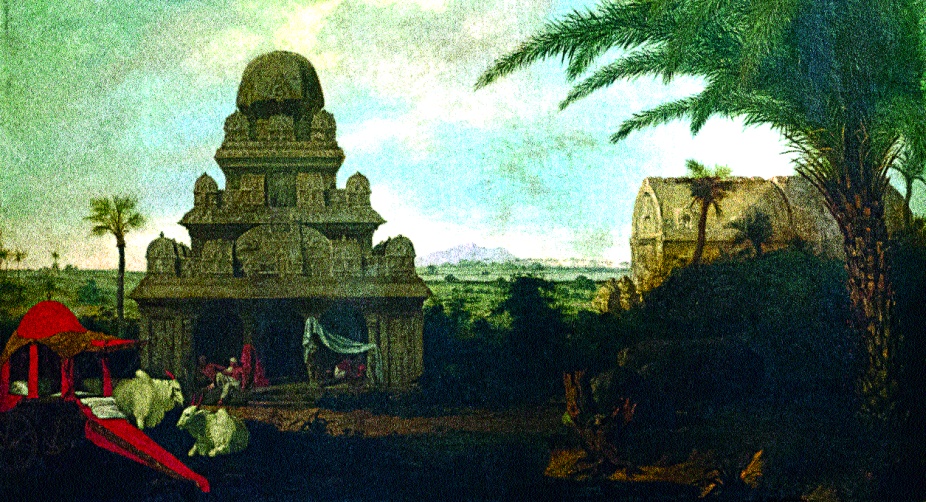Rightly has it been said that the founding fathers of the
Asiatic Society were responsible for the rediscovery of India and her past. The
“Transactions” of the Asiatic Society, first published as Asiatick
Researches between 1788 and 1797, were so much in demand in the literary and
scholarly world that a pirated edition of the first volume came into
circulation in England in 1798, and some of its volumes translated into German
and French. Through them the Society came in contact with several
internationally distinguished scholarly Associations like the American
Philosophical Society of Philadelphia, the Linnean Society of London, the Royal
Society of Edinburgh, and the Society of Antiquities of England.
The Society proved to
be a pivotal centre of Oriental studies and research, extending a helping hand
to the other two major centres of activity that paved the way to the Indian
Renaissance, the College at Fort William, and the Serampore Mission of William
Carey, that proposed English translations of classical Sanskrit texts in 1805.
The first book chosen was the Sanskrit epic Ramayana, undertaken by the Society
at a cost of Rs 5,500.
Advertisement
Some of the famous contributions of the Asiatic Society
during the first 30 years are remarkable, namely, S Davis’ Astronomical
Calculations of the Hindus in 1795; H T Colebrooke’s Duties of a Faithful Hindu
Widow in 1795; J Duncan’s Discovery of Two Urns in the Vicinity of Benares in
1797; H T Colebrooke’s The Vedas in 1805; J Malcolm’s Sketch of the Sikhs in
1810; F Wilford’s Ancient Geography of India in 1815 and E Strachey’s Early
History of Algebra in 1816.
Two decades before
Ram Mohan Roy’s first tract on Sati, H T Colebrooke had proved from study of
early texts that the practice of Sati was a gross deviation from authentic
tradition.
Sir Charles Wilkins translated the Bhagavadgita into English
in 1785, deciphered a number of Sanskrit inscriptions published a translation
of Hitopadesa in1787 and a Grammar of the Sanskrit Language. Sir William Jones
translated Kalidasa’s Abhijnana in 1789, Jayadeva’s Gitagovinda in 1789 and
Manusamhita in 1794; and edited the Ritusamhara in 1792; and translated the
Laila Majnu from Persian. The works initiated by Wilkins and Jones were
continued by Colebrooke and Wilson. Colebrooke, as president of the Society
from 1806 to 1815 contributed 19 papers to the Transactions of the Society. He
published an English translation of Jagannath Tarkapanchanan’s celebrated work
on Hindu law, the Vivadabhangarnava under the title Digest of Hindu Law on
Contracts and Successions in1798. His critical edition of the Sanskrit lexicon
Amarakosha came in 1808. Wilson, Secretary from 1811-32, published Kalidasa’s
Meghaduta in 1813 and translated 18 principal Puranas into English. He also
published an edition of Kalhana’s Rajatarangini in 1825. Sir John Shore,
1751-1834 who succeeded William Jones as president of the Society in 1794,
published from a Persian version an abridged English translation of the Yoga
Vasistha and contributed six papers to the Asiatic Researches. Alexander Csoma
de Koros’s Grammar of Tibetan Language was published in 1834.
Most of the works of the Society are research-based and
research-oriented, and so have not been loudly spectacular. But its
publication, the “Books”, consisting of a series of several hundred
Oriental texts in Sanskrit, Arabic, Persian, Bengali, Tibetan and other Asian
languages, both in original and translation, has earned the Society a
formidable reputation among scholars over the world. Archaeological and
Geological surveys, census reports, treatises on law and
revenue systems, all prepared solid bases for all future researches on Asia and
the Orient.
The exhibition at the
India International Centre is suitably rich in text and visual exposition, well
chosen eye opener for the city’s post Independence generation towards an
illustrious but silent pioneer of India’s academic world.
By Aruna Bhowmick











